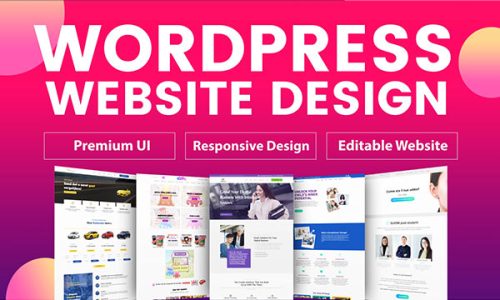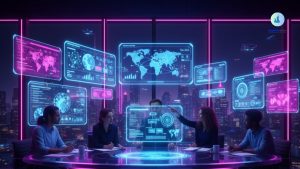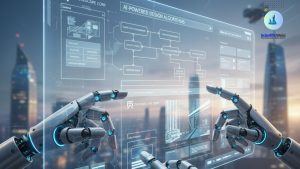
The Future of Web Design in 2026 | How AI & Automation Are Changing Digital Experiences
- Editorial Team
- October 29, 2025
- Artificial Intelligence, Web Design
- 0 Comments
The Future of Web Design in 2026 | How AI & Automation Are Changing Digital Experiences
A New Era of Web Design Has Arrived
The web design world in 2026 doesn’t just evolve—it transforms. Gone are the days when a web designer manually placed every pixel, tested every layout, and fine-tuned responsiveness by hand. Today, AI (Artificial Intelligence) and automation are the driving forces behind how digital experiences are crafted, optimized, and maintained.
At ScientificWebs, we’ve witnessed this revolution firsthand. From India to Dubai, the Netherlands to Germany, businesses are rethinking what a website truly means. It’s no longer just a digital storefront—it’s an intelligent ecosystem that adapts, learns, and engages in real-time.
So, what does the future of web design actually look like in 2026? How are AI algorithms, machine learning models, and automation tools reshaping creativity? Let’s dive deep into this exciting future.
AI in Web Design: The Game Changer of the Decade
The role of AI in web design has evolved far beyond automation. It’s now about creating personalized, data-driven user experiences.
Think of AI as a silent co-designer—it studies user behavior, analyzes engagement, and adjusts visual and functional elements to ensure the best possible interaction.
How AI Enhances the Design Process:
- Automated Layout Generation:
AI tools like Wix ADI or Framer AI can generate layouts based on user intent, niche, and content type. - Predictive Personalization:
AI predicts what users want before they even click. For example, it might highlight a product or feature based on previous browsing history. - Intelligent A/B Testing:
Instead of running manual experiments, AI algorithms automatically test hundreds of variations and choose what converts best. - Smart Content Suggestions:
AI-driven tools now recommend visual assets, typography, and even micro-interactions based on user demographics.
Real-World Example:
ScientificWebs integrates AI analytics into client websites to learn from visitor behavior. The data helps us adjust CTA placements, image choices, and color schemes dynamically—leading to up to 40% higher engagement rates.
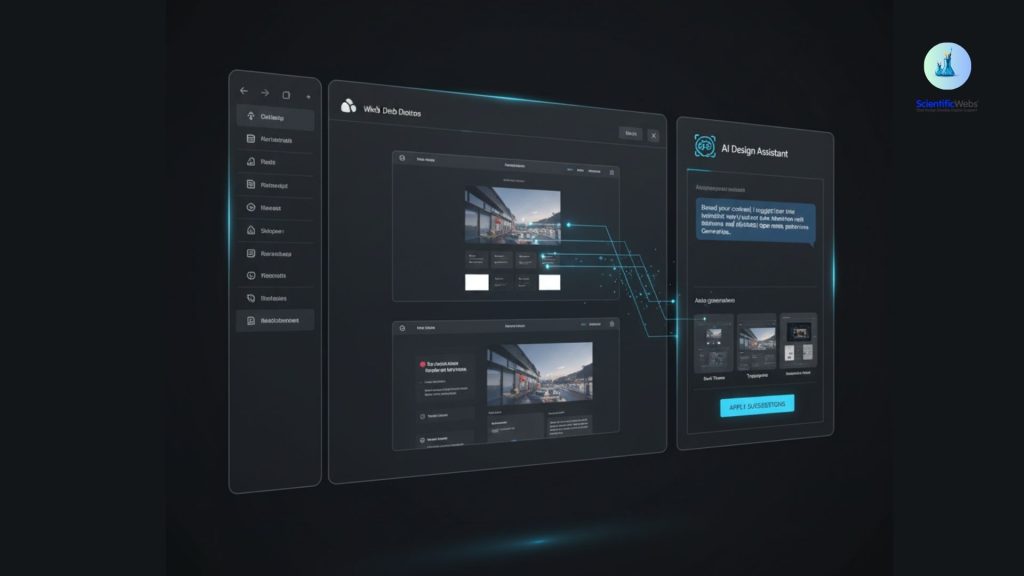
Automation: The Backbone of Modern Web Design
Automation doesn’t replace creativity—it amplifies it. It removes repetitive tasks, freeing designers to focus on innovation and storytelling.
Automated Processes Making a Difference:
- Code Generation: AI-powered tools like GitHub Copilot speed up front-end coding.
- Design-to-Code Conversion: Tools can now automatically turn Figma or Adobe XD designs into clean HTML/CSS/React components.
- Performance Optimization: Automated systems monitor site speed, accessibility, and SEO in real time.
- Maintenance & Updates: Websites self-update content, security patches, and plugins through smart scripts.
Result?
Faster project delivery, fewer human errors, and enhanced scalability—something ScientificWebs integrates into every project lifecycle.
Top 7 AI-Powered Web Design Trends Dominating 2026
| Trend | Description | Impact |
| 1. Conversational Interfaces | AI-driven chatbots and voice assistants guiding user experience | Higher engagement |
| 2. Adaptive Layouts | Websites that change dynamically based on real-time user context | Personalized design |
| 3. Predictive UX | Machine learning predicting next user action | Improved conversions |
| 4. Automated SEO Optimization | Real-time AI SEO suggestions | Better ranking |
| 5. AI-Powered Accessibility | Tools improving inclusivity for disabled users | Broader audience reach |
| 6. Visual Generative AI | AI creating design assets like banners & illustrations | Faster content creation |
| 7. Emotion-Based Design | AI detecting user emotion to adjust tone & visuals | Deeper engagement |

The Human-AI Collaboration: Not Competition, But Partnership
A major misconception is that AI replaces designers. In reality, it empowers them.
At ScientificWebs, our designers use AI tools as creative assistants, not competitors. AI handles the “heavy lifting” — automation, analytics, and predictions — while humans focus on emotion, storytelling, and brand essence.
This human-machine partnership results in designs that are smart yet soulful.
“AI gives us data; humans give it direction.” – ScientificWebs Design Team
Case Study: Transforming a European Brand with AI-Driven Web Design
One of our European clients in the hospitality sector faced declining engagement on their website. By integrating AI-driven heatmaps and predictive UX, ScientificWebs redesigned their interface.
- Bounce rate dropped by 38%
- Average session time increased by 62%
- Conversion rate improved by 45%
This showcases how AI-enhanced creativity leads to measurable business outcomes.
Why Businesses Can’t Ignore This Shift
AI isn’t optional anymore—it’s the foundation of tomorrow’s digital identity.
Companies that adopt AI and automation in web design experience:
- Higher ROI on digital investments
- Increased user retention
- Real-time adaptability
- Scalability across multiple regions
For global enterprises like those served by ScientificWebs, this means uniform excellence—whether a site runs in Dubai, India, Germany, or the Netherlands.
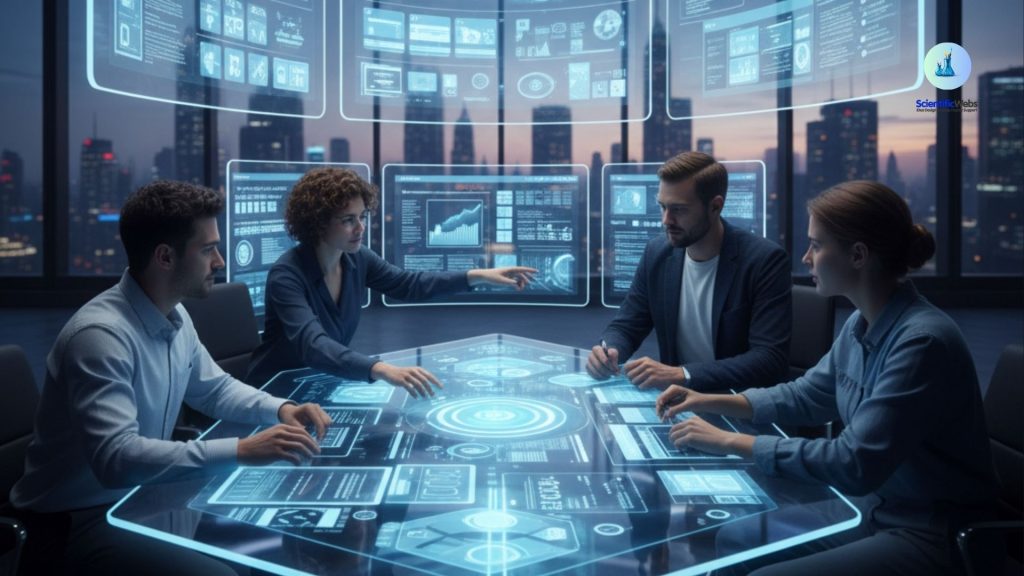
How ScientificWebs Leads the AI-Driven Design Revolution
At ScientificWebs, we blend creativity with intelligence. Our approach to AI-driven web design includes:
- Machine learning-based UI testing
- Automated code optimization
- Smart UX prediction models
- Data-driven aesthetic refinements
- Real-time multilingual personalization
This fusion ensures every client gets a future-ready digital ecosystem that not only looks great but thinks smart.
Future Outlook: The Next 5 Years of Web Design
By 2030, we’ll see AI-driven websites that fully adapt to individual emotional states, environmental conditions, and even voice tone.
Websites will evolve into interactive companions—not static pages.
And agencies like ScientificWebs will remain at the forefront, combining innovation, empathy, and intelligence to redefine the meaning of digital experiences.
The future of web design belongs to those who embrace change. In 2026, AI and automation are no longer just trends—they are the creative partners shaping the digital frontier.At ScientificWebs, we don’t just build websites; we build intelligent experiences that learn, adapt, and inspire.
Reference: Google AI Web Development Trends
Ready to future-proof your website?
Partner with ScientificWebs today to create an AI-driven digital experience that stands out in 2026 and beyond. Contact us or WhatsApp

